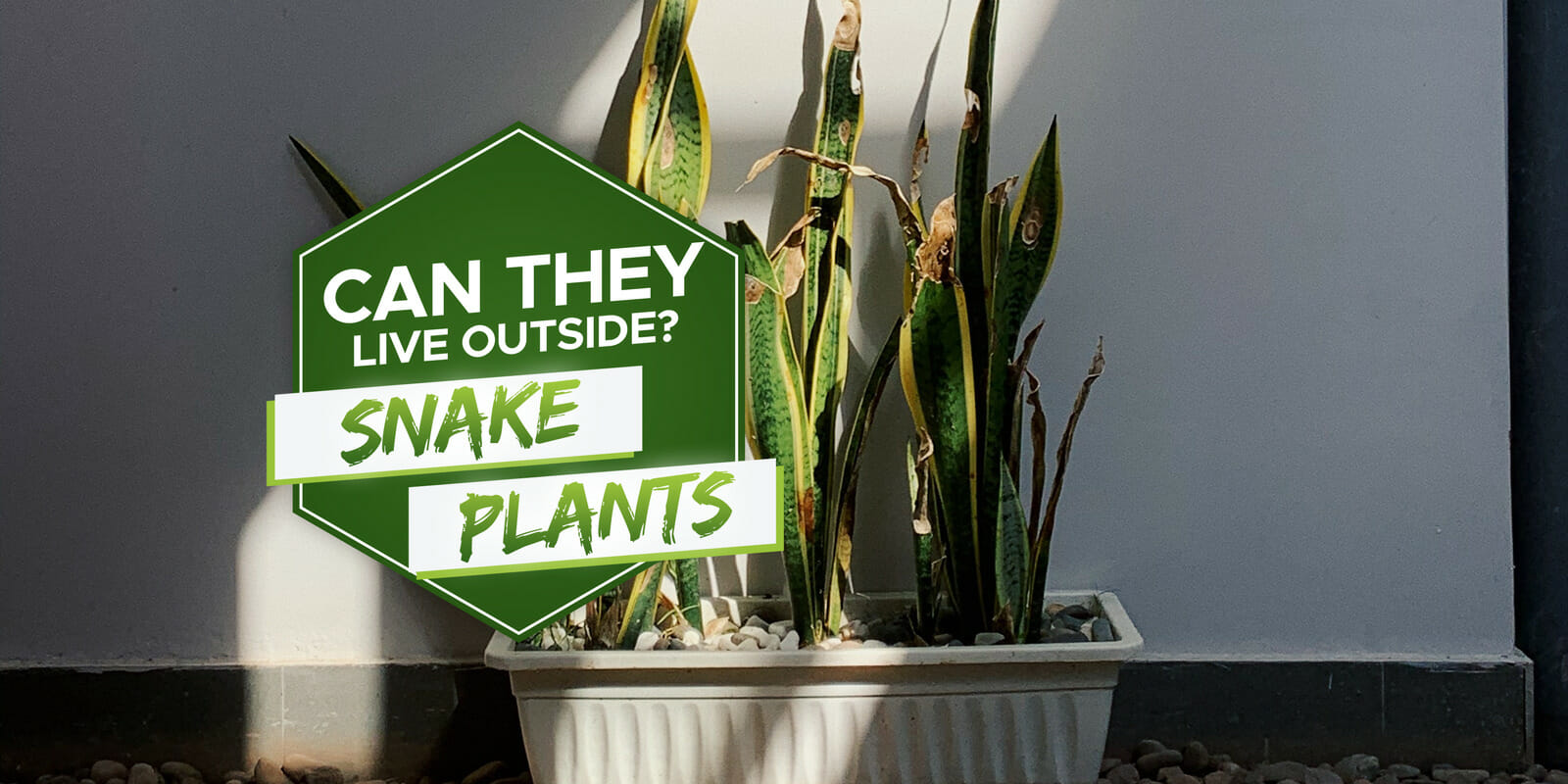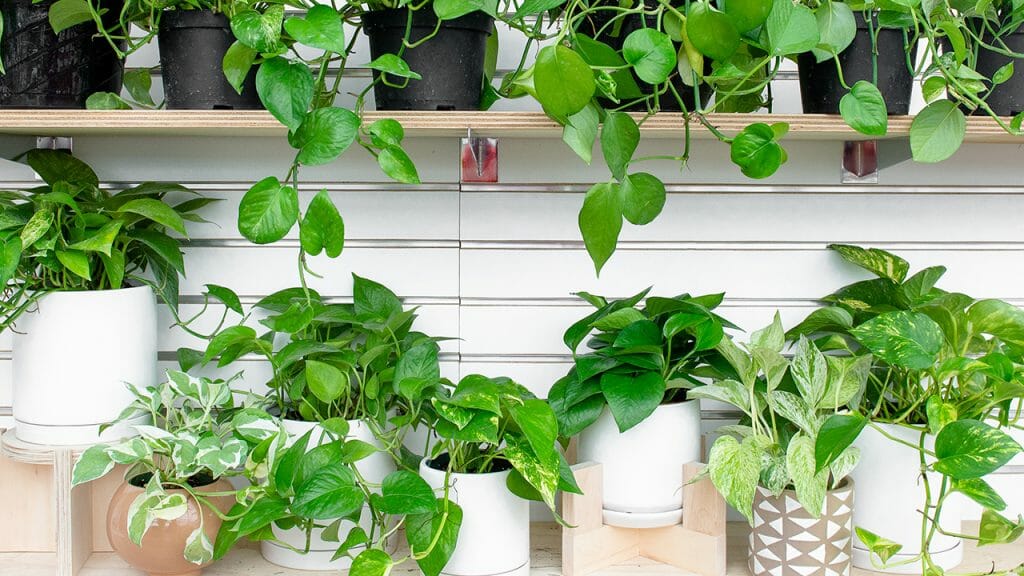
Have you ever noticed that you mostly see snake plants indoors? Us too.
Besides their ornamental qualities, there are many reasons that this is the case, but our question is, can they also live outside?
Can snake plants live outside? Snake plants can live both inside and out, but it depends on the climate. They are better suited to hot, dry climates without heavy rain, so they should be kept indoors exclusively in cold temperatures.
These tall, slender plants are very popular indoors because they can survive so well in low light, and they clean the air at night, but if you are in a warm climate, there’s no reason they can’t live outdoors.
This article will look closely at snake plants to help you figure out the best place to keep them so they thrive!
What is a Snake Plant, and What Are Its Needs?
Before we take a look at whether you can keep a snake plant outside or not, we need to learn a little more about them and what they need to grow at their best.
Snake plants or dracaena trifasciata are part of the Asparagaceae family. They are an evergreen perennial plant that originates in the tropical areas of West Africa. Now they are popular worldwide and have become a very trendy plant to have in your plant collection!
The stalkless beauties are great beginner plants because of how low maintenance they are, so let’s look at what a snake plant needs to live its best life.
- Light- Snake plants love bright sunlight but can thrive in just about any light situation. We’re not kidding, you can even put one of these in a dark corner of your bathroom, and it will keep growing.
This makes them very adaptable to live inside or outside and in whatever light situation you may have available.
- Soil- The kind of soil snake plants are in is crucial to their survival. They prefer free-draining soil that prevents rot. Any soil that is dense and holds a lot of water could spell disaster for a snake plant.
- Watering- Snake plants are great beginner plants because they can tolerate very irregular watering.
You only need to water your snake plants once every couple of months. This sounds drastic, but they will quickly rot if overwatered, so give it a good watering and forget about it for a little while; it will be worth it.
These plants thrive most between 65 and 85 F and shouldn’t go below 55 F. If it gets too hot, the leaves will yellow and dry out. This is a factor to consider when deciding where to place your snake plants, especially if you are planting them outside.

Can You Put Snake Plants Outside?
Snake plants are so appealing and easy to take care of, so why is it that we see them inside the majority of the time?
Obviously, as we talked about earlier, they are plants that survive well indoors, so they are a very popular, low-maintenance houseplant. However, they can live outside too.
There are a few factors that you need to consider about your environment before planting them outside:
- What is my climate like?
Climate plays a very large part is whether snake plants will survive outside. There are two elements you need to consider: how much rain you get and how cold it gets.
We suggest avoiding planting snake plants in your garden if you are in a climate that gets a lot of heavy rain. This will end up drowning your plants and rotting them.
As we mentioned above, snake plants like warmer climates and shouldn’t be in an environment that is cooler than 55 F. Due to this, snake plants are used exclusively as houseplants in cold countries.
- What soil is in my garden?
Earlier, we spoke about how prone to rotting snake plants can be if overwatered. This is an element that is hard to control when you plant them outside in your garden because it comes down to rainfall and how the soil retains that moisture. If your soil is clay or another less sandy soil, your snake plants may get drowned.
The perfect outdoor climate for snake plants is a tropical environment that doesn’t reach below 55 F in winter and gets little heavy rainfall.
The best way to handle snake plants, in our opinion, is to plant them in pots. This way you can control the drainage, temperature, and light quality by simply picking it up and moving it. You can transfer your snake plant from the garden, to the patio, and into the house depending on the time of year or if you want to change up your plant aesthetic.
So in short, snake plants can be kept inside and outside in warm climates and should be kept inside in cold climates.
Keeping a Snake Plant Outside vs Inside
So now that we have all that knowledge, let’s take a look at snake plants in these environments side by side:
| Inside | Outside | |
| Benefits | Cleans the air | Very low maintenance |
| Temperature | Easier to keep at the right temperature | Might be susceptible to cold weather |
| Watering | Controlled | Can get overwatered by rain |
| Soil | Drainage can be controlled through the pot | Drainage relies on the soil in your garden |
Overall, keeping your snake plant in a pot outside is the best way to make sure you keep a handle on their care, as low maintenance as it might be.

Why Do Snake Plants Like Warmer Temperatures?
Snake plants are indigenous to West Africa, Nigeria in particular, which is a tropical environment where they thrive.
They can easily put up with very hot, humid, or dry climates, and they prefer less water. This makes snake plants unique as they seem to blossom in environments that many plants will struggle in.
If you live in this environment, we encourage you to plant snake plants outdoors because they will be in their element.
Can a Snake Plant Survive Outside in Winter?
This all depends on the climate that you are living in.
If you live in a country with a hot and dry climate, your snake plants will likely thrive through winter.
However, if you live in a colder country, especially one that gets a lot of rain and snow, your snake plants will never make it through the winter. Instead, pop them in pots, bring them indoors where it’s warm and dry in the winter, and bring them back out when it’s warmed up in the summertime.
Frequently Asked Questions:
How long does a snake plant live?
We’ve already shown you how wonderful and easy these plants are to handle; what if you told you they’re also long-lasting?
If you take care of your snake plants, they can live for 5 to 10 years; however, they can last upwards of 20 years if you’re fortunate!
If you consider all the care elements we’ve discussed today, you could have a snake plant in your life for decades!
Are snake plants toxic to animals?
Yes, snake plants are mildly toxic to dogs and cats, but only if they eat them.
If your animals interact with this plant, it won’t be an issue, but we suggest keeping them higher if your pets seem curious.
If they ingest it, it will cause a bit of stomach distress, but it is not fatal. If you are worried, you can take them to the vet to be sure.
Conclusion
At the end of the day, we recommend popping your snake plants in pots, so you can freely move your snake plants from inside to outside with ease.
This is the easiest way to control watering and drainage while benefiting from their beauty inside and outside the house.
We hope this little guide has given you all the knowledge you need to go out and populate your home and garden with gorgeous snake plants.


